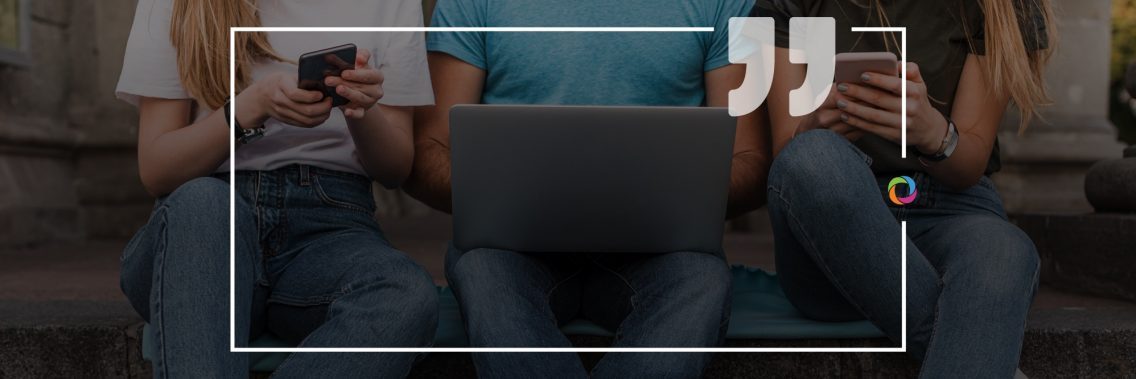The post 9-11 “War on Terror” era was characterized by the parallel ascension of social media. With access to different popular platforms, terrorist organizations have the potential to spread their message to a whole new audience just from their fingertips. Is social media a real danger in this regard? Check out some opinions below.
How should social media policies be changed to counteract terrorism propaganda?

“Social media policies can reflect the importance of training and capacity building initiatives for journalists with a special emphasis on reporting terrorism activities on social media networks. Policies must include system building, for example, rumor tracking tools. Often the propaganda has reached its peak, changed mindsets, and contributed to the recruitment of more individuals who find it appealing to join terror networks. Instead, social media policy should have effective rumor management systems integrated within it that has clear risk levels. This can help journalists and social media professionals to pick up on changing discourse on social media before it becomes propaganda. The risk levels should also be location sensitive to be able to prioritize counter-messaging to mitigate the effect of brewing propaganda and do no harm. Social media policies can also be reflective of definitions where sensitive information is clearly defined for example what constitutes personal information? What are the remedies if propaganda is impacting individual’s lives? For there are always civilians who have through aspects such as employment, prevention of violence, and extremism given up on terror activities and do not want to be identified in propaganda. Social media policies should also have an integrated and effective targeting tool when it comes to messaging, to reach more youth who are more inclined to be inducted into terror activities because of poverty, lack of livelihood, etc. Social media policy can also have a set of preparedness messaging and a glossary of terminology that have a calming effect on terror groups, for example, by calling them separatists instead of terrorists in appropriate situations. A glossary that can help to reduce the divide and reduce radicalism must be introduced. A glossary should be mindful of the root causes of terrorism – often it’s a feeling of divide – when certain members of the community do not feel integrated, they are appeased by terror networks to achieve a sense of belonging.”

“The aftermath of the September 11 attacks involved an important re-evaluation of the United States’ foreign policy. The war on terror articulated a paradigm shift in the Grand Strategy, implicating general policies to achieve the termination of the “axis of evil” while merging ideas of human and common security into a long-term perspective. However, with the rise of globalization, all forms of human action were characterized by the free movement of people, information, goods, and capital and the use of platforms that signified a favorable environment to disseminate ideals, recruit, radicalize and spread propaganda broadening the conflict area and posing new challenges to security. Over the past years, technology and social media have proven to be powerful tools that shape the machinations behind the political landscape as it impacts the way private citizens view and consume political information, even if such information fails to promote socially, ethically, and democratically ideals to solve the already existing contradictions and conflicts. Hence, social media and technology have become a conventional and cost-effective tool for extremist tactics, that is; violence, terrorism, and subversive activities that reach bigger audiences. Having stronger social media policies to regulate and counter these efforts will never be effective enough and will create contradictions within the democratic ideals as they surpass civil liberties, privacy, and freedom of speech. In the same manner, the costly policy of achieving a Democratic revolution in the Middle East will continue to confer legitimacy to the enemy, intensifying the state’s defection. Henceforth, a more effective strategy would promote social media policies to legally bind ally states to assemble a unipolar structure within the international system, institutionalizing cooperation within each sovereign state to assume responsibility for controlling terrorists, de-legitimizing terror as a tactic rather than fighting the conventional enemy. It is not Al-Qaeda, it could be anyone.”

“In answering this question, we must start from the cause of the problem. Who made the omissions and mistakes that led to the propaganda of terrorist organizations spreading quickly and easily on social media? The answer is: mistakes were made by both the states and the management of social media companies. Both did not understand in a timely manner the importance of these platforms and their suitability for spreading terrorist propaganda. They started to take this big problem more seriously quite late. Now we have another question: whose responsibility is greater? Of course, the states. The states had to launch their control mechanisms much earlier. Even today it is clear that states and their intelligence agencies often lose the battle with terrorist propaganda. I don’t know whether the problem is in human resources or something else. What should social media do? First of all, social networks need to clearly identify the criteria on the basis of which some messages are defined as terrorist propaganda. This must be done to avoid possible censorship and restrictions on freedom of speech. I don’t think there are clear criteria at this moment. Further, people who work for social media companies cannot follow millions of profiles and their daily messages, but that is why these companies can hire so-called reporters or professional people who will monitor and analyze messages on social media in their speaking area. There is now a mechanism for reporting such messages by users, but it is not effective. Finally, social networks should organize user education campaigns about how to recognize terrorist propaganda and how to react. This would help the messages of terrorist propaganda to be identified and removed more quickly. Again, the states, their intelligence agencies, and the people who deal with counter-propaganda have the greatest responsibility.”
Check out more than 800 job opportunities in the Media&Communications sector here.

